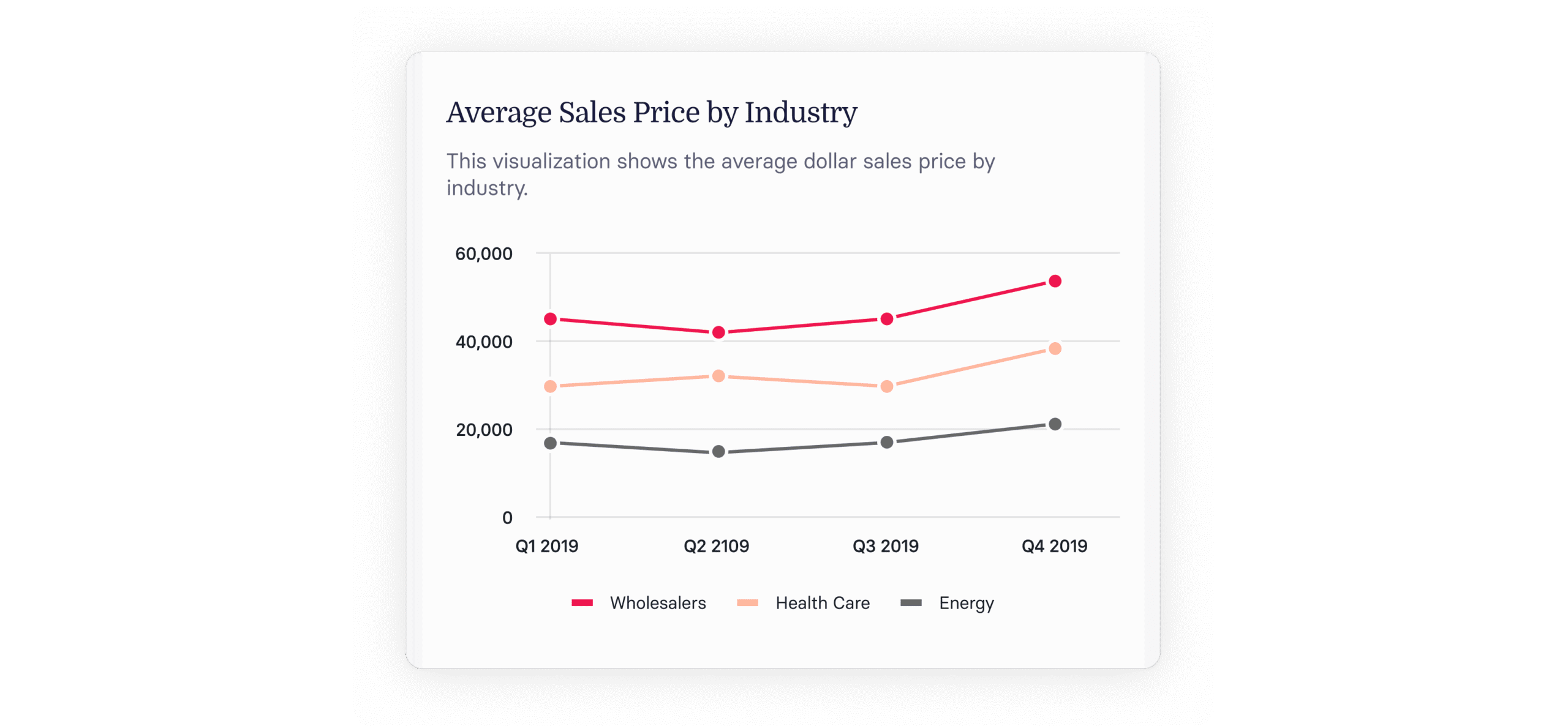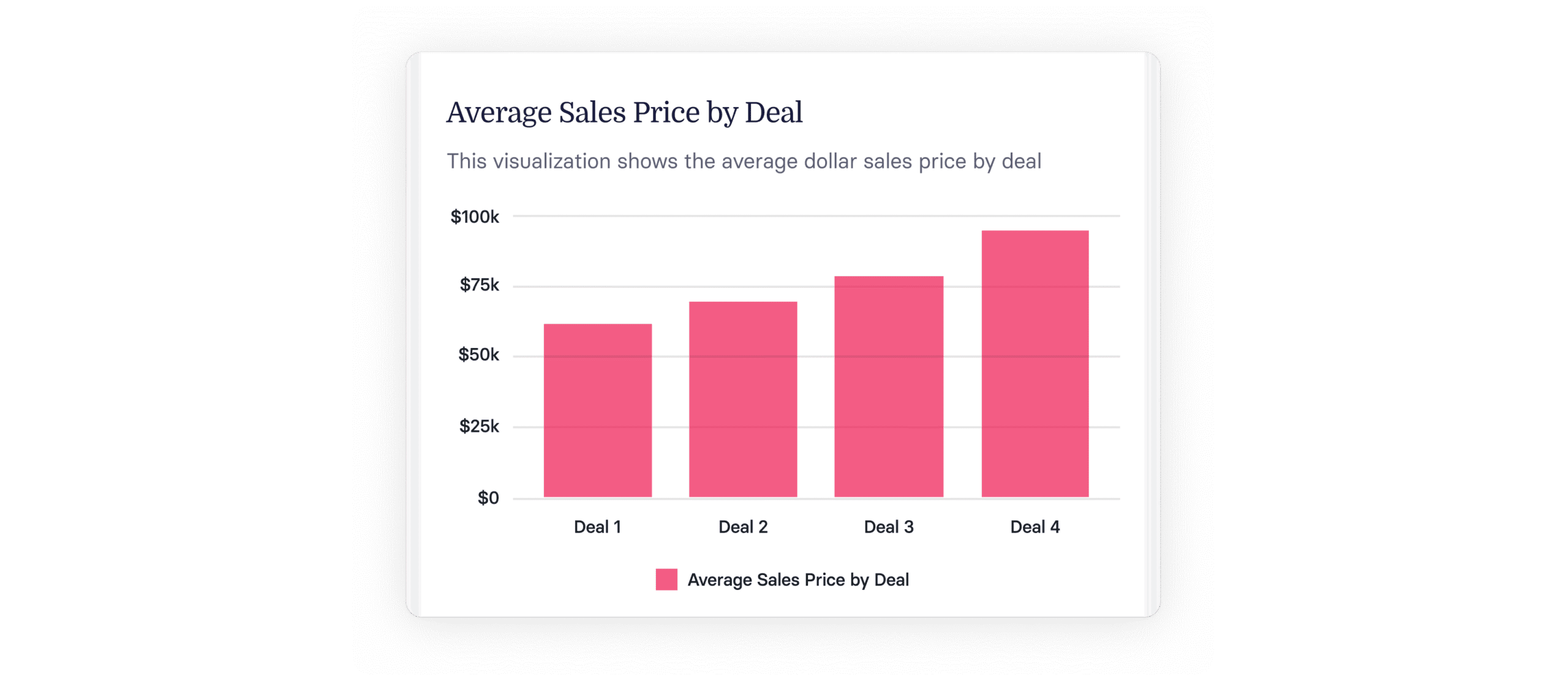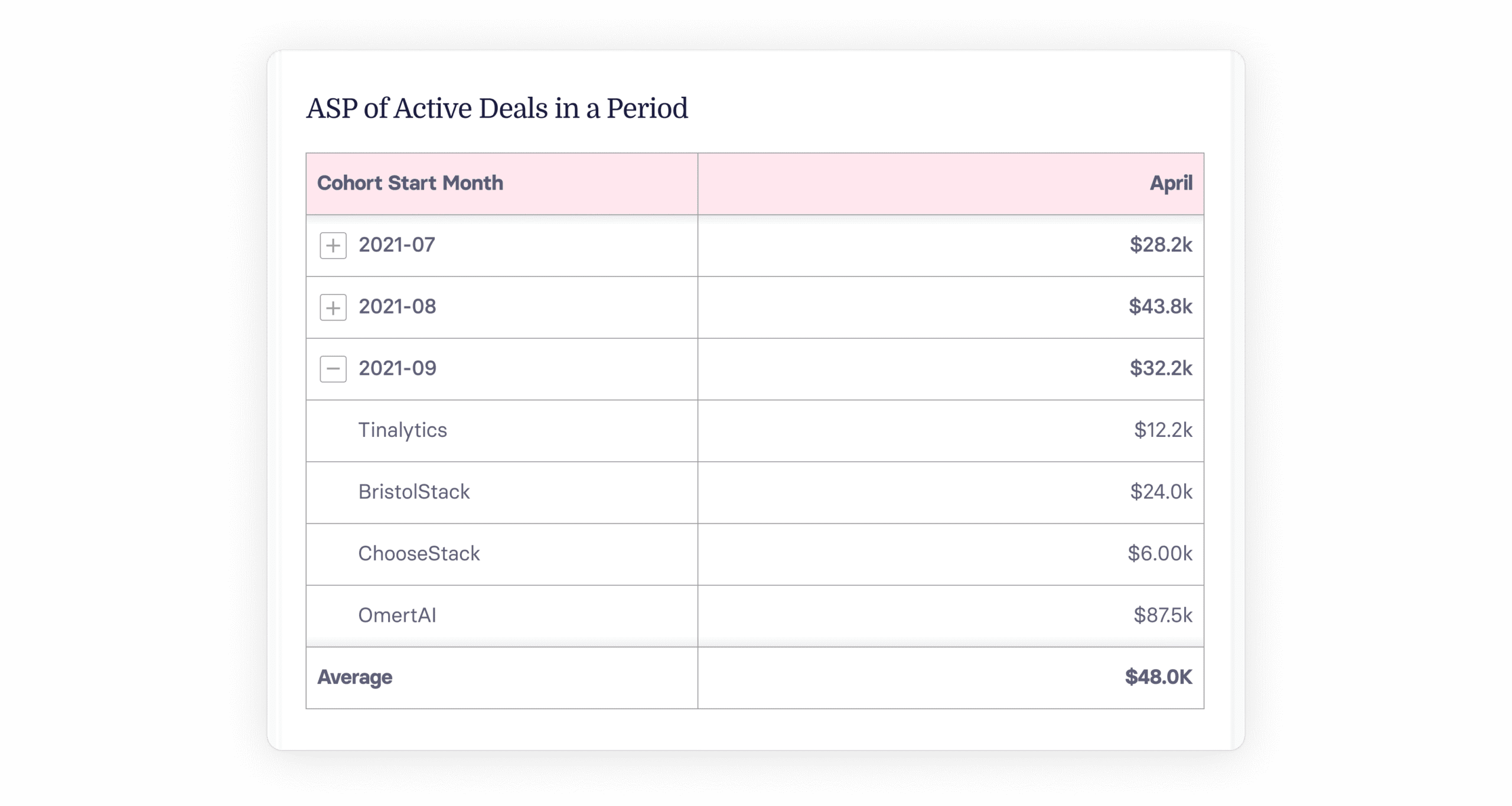Average selling price (ASP) in SaaS measures the average amount paid by new customers, distinct from renewals or upgrades.
What is average sales price?
Average sales price (ASP) is the average amount a customer pays when they first purchase your product or service. In SaaS, it’s often considered a subset of ARPA—focusing only on new business, not renewals or expansions.
For example, if a SaaS company earns $1,000 from 10 new subscribers, the ASP would be:
- ASP = $1,000 / 10 = $100
<<Download the SaaS metrics cheat sheet>>
Average sales price (ASP) is a key sales performance metric for SaaS companies. Analyzing ASP can give you insight into sales team effectiveness and how well your product resonates in the market.
While a general ASP figure helps gauge overall demand, digging into the data by segment—like region or customer type—can reveal which markets or teams are driving larger deal sizes and where growth opportunities may lie.
Next, let’s walk through how to calculate ASP and explore the benefits of tracking this metric closely.
The importance of ASP as a financial metric
Average sales price (ASP) is a valuable metric that supports strategic decision-making for both new and established SaaS companies. For startups, ASP benchmarks can help inform pricing strategies by offering insight into typical deal sizes within the industry.
Breaking down ASP by market segment or region reveals where your product performs best—helping you optimize ad spend and focus marketing efforts. When paired with customer personas, ASP also highlights your most engaged segments, opening the door for targeted upsells and improvements to metrics like net promoter score (NPS).
ASP also plays a role in shaping your customer acquisition strategy—providing a reference point for setting an upper limit on your CAC.
<<Get the 10 SaaS metrics you didn’t know you needed ebook.>>
How to calculate the average sales price in SaaS
SaaS companies can calculate their average selling price by dividing total ARR from new customers in a period by the number of new customers they signed in that period.

Let’s say a cloud-based storage company sells 12-month contracts ranging from $16,000 to $30,000 per year, based on service level and features. To calculate ASP for a given month, take the total value of all closed-won deals—say $240,000—and divide by the number of new customers signed that month—say 10.
ASP = $240,000 / 10 = $24,000
Keep in mind: When calculating ASP for SaaS, only include revenue from new customers for a specific service within a defined time period.
Median sales price vs. average sales price
Average sales price (ASP) is calculated by dividing total revenue by the number of customers. A similar—but slightly different—metric is median sales price (MSP).
To find MSP, list all sales prices in order (ascending or descending) and select the middle value.
For example, if you closed five deals last month at $1,000, $1,125, $800, $1,230, and $1,140:
- ASP = ($1,000 + $800 + $1,125 + $1,230 + $1,140) / 5 = $1,059
- Arrange prices: $800, $1,000, $1,125, $1,140, $1,230
- MSP = $1,125
What can company leaders do with the average sales price metric?
A company’s average selling price (ASP) might not reveal much at a high level—but when you break it down, it can offer valuable insights. By slicing ASP data into more granular views, business leaders can uncover trends that inform pricing strategy, customer segmentation, and go-to-market planning.
Let’s explore how to break down ASP and what you can learn from it.
Key takeaways
- Average selling price (ASP) in SaaS measures the average amount paid by new customers, distinct from renewals or upgrades
- Tracking ASP offers insights into sales team performance and product market fit, guiding strategic decisions
- Analyzing ASP by region or segment helps identify markets with larger deal sizes and potential growth opportunities
- Comparing ASP with other metrics like customer lifetime value and retention rates provides a holistic view of business health
Collect average sale price by industry
If your business spans multiple industries, it’s good to compare the average selling prices per industry. That way, you can determine which industries drive the greatest revenue growth.

Business leaders use that information to shape investment decisions and develop sales capacity plans.
Analyze the ASP within context
Average selling price can look very different depending on your business model—so it’s important to interpret it in context.
For example, enterprise deals typically come with higher price points than those for small or mid-sized businesses (SMBs). Comparing ASP across these segments without accounting for that difference can lead to misleading conclusions.
And while ASP offers helpful insight, it doesn’t tell the whole story. To truly understand how a product is performing, business leaders should consider other key performance indicators alongside ASP, such as:
- Customer lifetime value (CLV or LTV)
- The average revenue per account/user (ARPA or ARPU)
- Annual contract value (ACV)
- Customer retention metrics like net revenue retention
A high average selling price doesn’t always signal business growth. If ASP is high but customer churn is also high, it could point to issues with product fit—especially for more complex customer accounts.
On the other hand, a product with a lower ASP but strong retention and recurring revenue might still be worth deeper investment.
The takeaway? ASP is valuable, but only when used alongside other key metrics. Context is everything when making smart, strategic decisions.
Capture the ASP at a deal-by-deal level
Breaking down average selling price across individual sales deals helps you spot which customer accounts drive the most revenue. These insights can uncover patterns and inform a more targeted, effective sales strategy.

You can take this a step further by analyzing ASP for active deals. A real-time view of your pipeline gives you clearer insight into where to focus your sales efforts—helping you prioritize high-value opportunities and allocate resources more effectively.

Answering the following questions while analyzing ASP will give you more refined insights into your sales process:
- Are there specific company sizes or buyer personas that increase the ASP?
- Are there some support tiers that boost customer satisfaction?
- Have you offered any additional services to boost the ASP successfully?
Break down the ASP by sales rep
Average selling price can also be a valuable sales performance metric. Breaking it down by sales rep helps identify top performers based on the value of their deals.
Understanding what sets those reps apart—whether it’s how they position value, negotiate, or target specific segments—can help the rest of the team improve. It also gives business leaders insight that can shape future pricing strategies.
<<Get a head start on your top-line planning with this sales capacity model template.>>
Average selling price FAQs
What is average selling price?
Average selling price (ASP)—also called average sale price—refers to the average amount a product or service sells for. You can calculate ASP across your entire business or drill down by product, sales rep, region, or customer segment. It’s also used more broadly across industries as a pricing benchmark.
ASP is especially useful in SaaS, where it helps teams understand average revenue per account. Other industries use it too—for example, real estate professionals track ASP to monitor home values, while hospitality businesses analyze average room rates to stay competitive.
Why is average selling price important?
ASP helps you understand current pricing trends and assess whether your pricing strategy is aligned with the market. It’s also a valuable benchmark when refining your go-to-market strategy or looking for ways to increase revenue—such as boosting average order value.
Recommended For Further Reading
How do you calculate average sales price?
To calculate ASP, divide the total revenue for a given product or service by the number of units or subscriptions sold during that period:
- Average selling price = total revenue ÷ total units sold
What is the difference between average and median sales price?
The average sales price is the total revenue divided by the number of units sold. The median sales price is the middle value when all sales prices are listed from lowest to highest. While ASP gives you a general view of pricing trends, median price can help you understand what a “typical” deal looks like—especially if you have outliers on either end.
